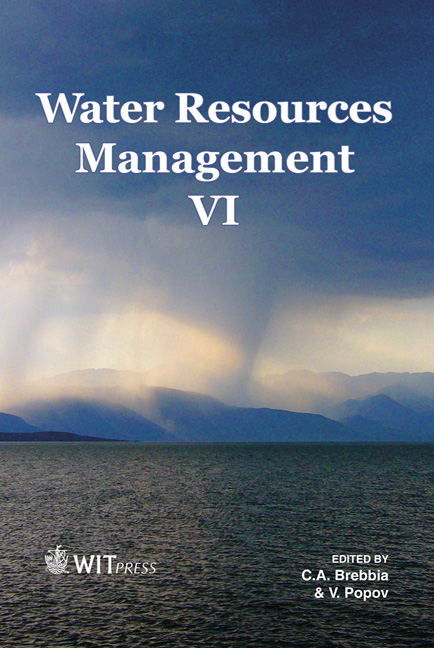Effect Of Alum And Lime On Phosphorus Leachability From Sewage Sludge
Price
Free (open access)
Transaction
Volume
145
Pages
6
Page Range
415 - 420
Published
2011
Size
263 kb
Paper DOI
10.2495/WRM110361
Copyright
WIT Press
Author(s)
Md. M. Mortula & S. Atabay
Abstract
Wastewater treatment plants generate large amounts of solid wastes on a regular basis. These waste solids contain a large amount of organic matter, nutrients and heavy metal. Existing knowledge has focused on cost intensive options for disposal of these waste solids. For this reason, the ability to adopt these technological means has been limited to large scale wastewater treatment plants. Due to lack of viable technological means, small and medium sized wastewater treatment plants dispose of solid waste in an unplanned way causing harm to the environment. One of the disposal practices is land based application (e.g. fertilizer). However, the application poses concerns of contaminants from heavy metals and nutrients. Therefore, there appears to be a growing necessity for finding appropriate technology to address the concerns related to leachability in sewage sludge. Alum treatment has the potential to reduce the leachability in sewage sludge, but alum treatment can reduce the pH, so lime addition can control the pH for the sewage sludge. Previous studies conducted by the author showed that the alum and lime treatment can reduce the leachability of sewage sludge. However, the effect of alum and lime dosages was not investigated. The objective of this paper is to assess the effect of alum and lime treatment of waste solids for reduction of leachability in wastewater treatment residuals. Batch tests were conducted to evaluate the leachability of phosphorus. The sludge was treated with 10g/l, 20g/l and 30g/l of alum solutions and lime doses of 10g/l, 20g/l and 30g/l to evaluate the effect of lime dosage on the leachability. The results indicated that 20g/l of alum treatment seemed to be the most effective in reducing phosphorus leachability. However, the increase in lime dosage reduced the phosphorus leachability, with 30g/l of lime provided the least phosphorus leachability. Keywords: leachability, batch tests, sewage sludge, land based applications and phosphorus.
Keywords
leachability, batch tests, sewage sludge, land based applications and phosphorus





